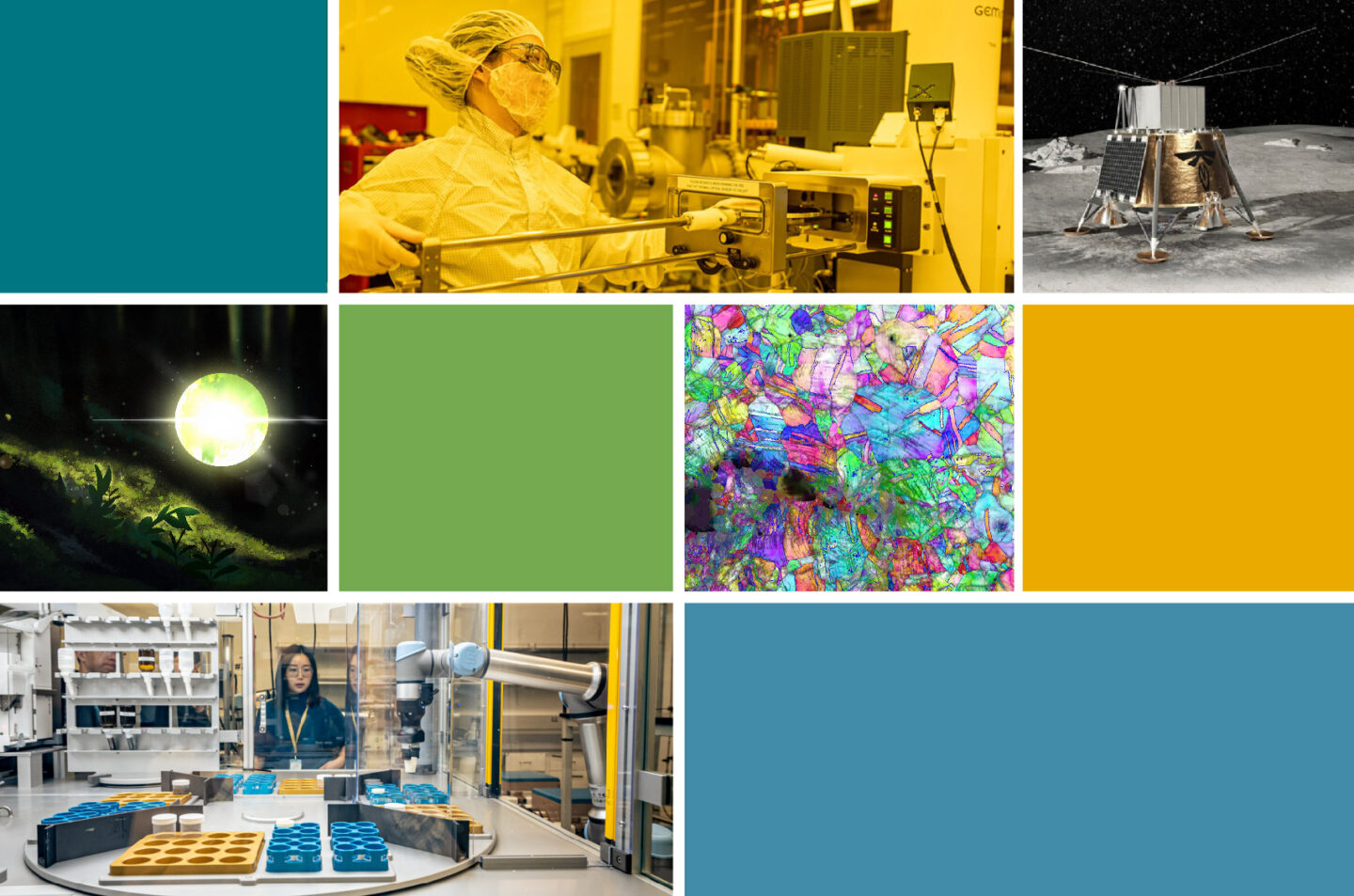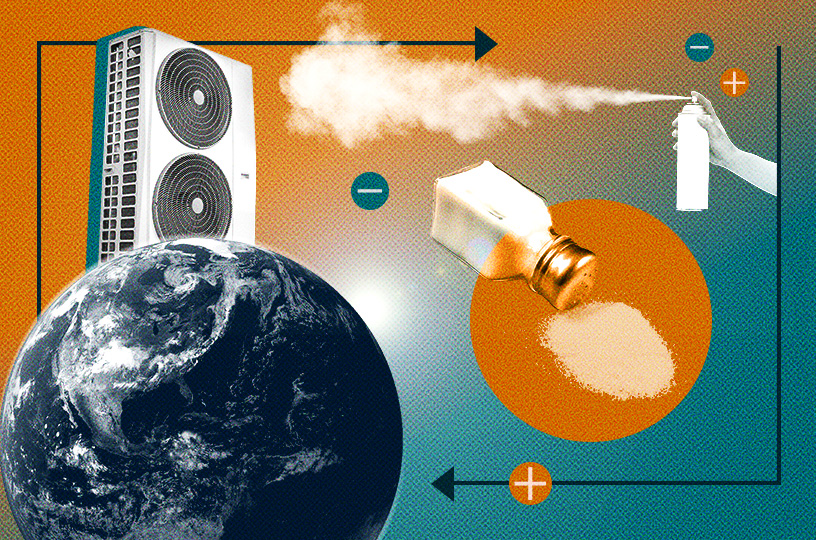From clean energy technologies to an antenna on the moon, 2023 was a great year for science at Lawrence Berkeley National Laboratory (Berkeley Lab). We made great leaps in fundamental research that will shape future discoveries for decades to come and developed new solutions and processes poised to make near-term impacts.
To celebrate the end of the year, here’s a roundup of some of our biggest stories and our significant milestones.
ESnet Turns on 400G Circuits Supercharging Multi-Site Scientific Research
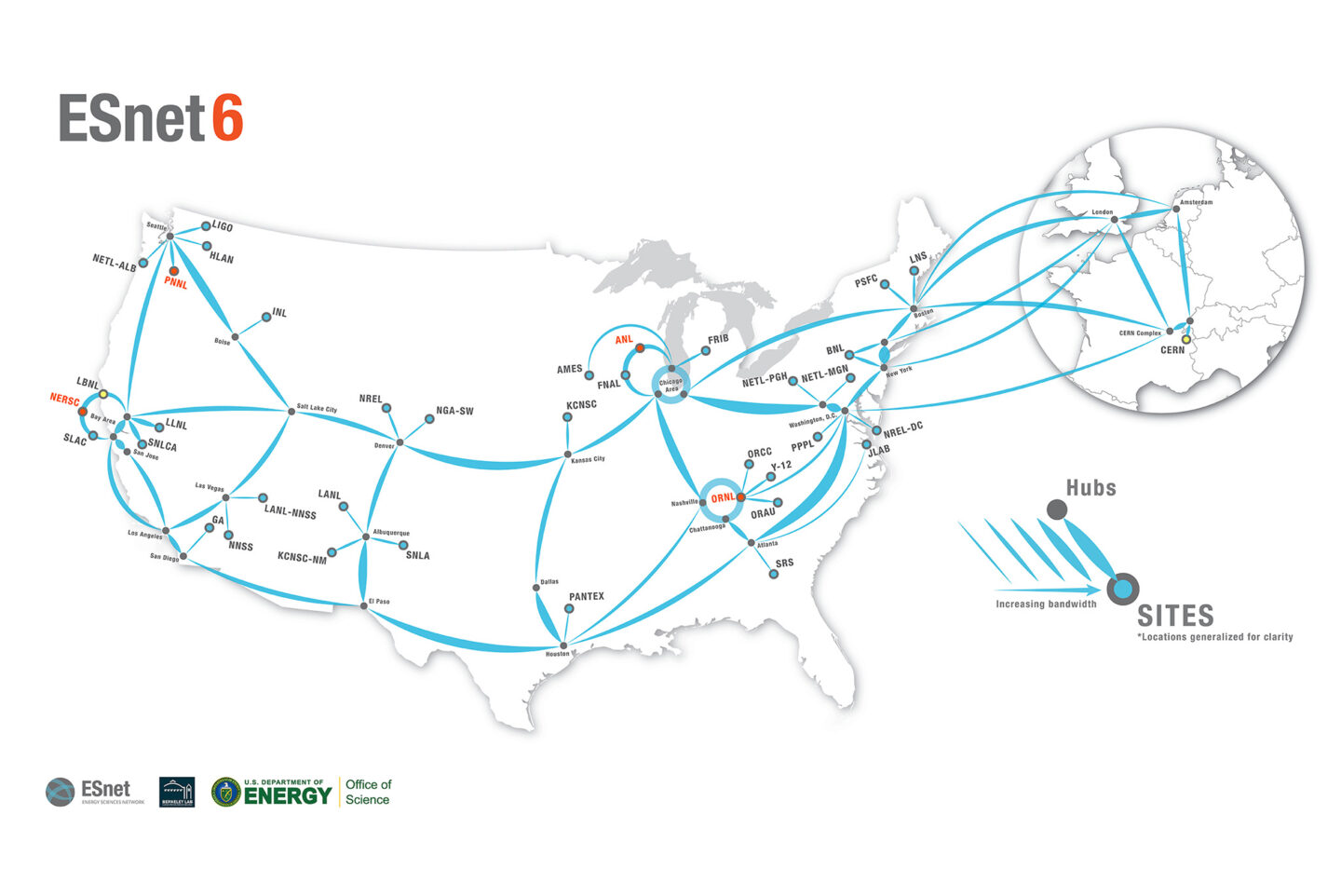 Multiple users of ESnet, the high-speed computing network that supports Department of Energy research, have gotten a turbo-boost. Following the installation of new circuits, the network now offers 400 Gigabit per second (400G) capability connecting Berkeley Lab’s National Energy Research Scientific Computing Center, Argonne National Laboratory, Oak Ridge National Laboratory, and Pacific Northwest National Laboratory to the ESnet6 backbone.
Multiple users of ESnet, the high-speed computing network that supports Department of Energy research, have gotten a turbo-boost. Following the installation of new circuits, the network now offers 400 Gigabit per second (400G) capability connecting Berkeley Lab’s National Energy Research Scientific Computing Center, Argonne National Laboratory, Oak Ridge National Laboratory, and Pacific Northwest National Laboratory to the ESnet6 backbone.
With this boost in capacity, scientists can process, analyze, visualize, share, and store the enormous quantities of research data at speeds up to four times faster than previously possible. “It’s of vital importance that scientific researchers not be hindered by where they or their project’s instruments, computational resources, and data might be located,” said Inder Monga, executive director of ESnet. “Enabling 400G, which represents the networking industry’s current gold standard, will help facilitate that kind of seamless collaboration.”
Listening to the Radio on the Far Side of the Moon
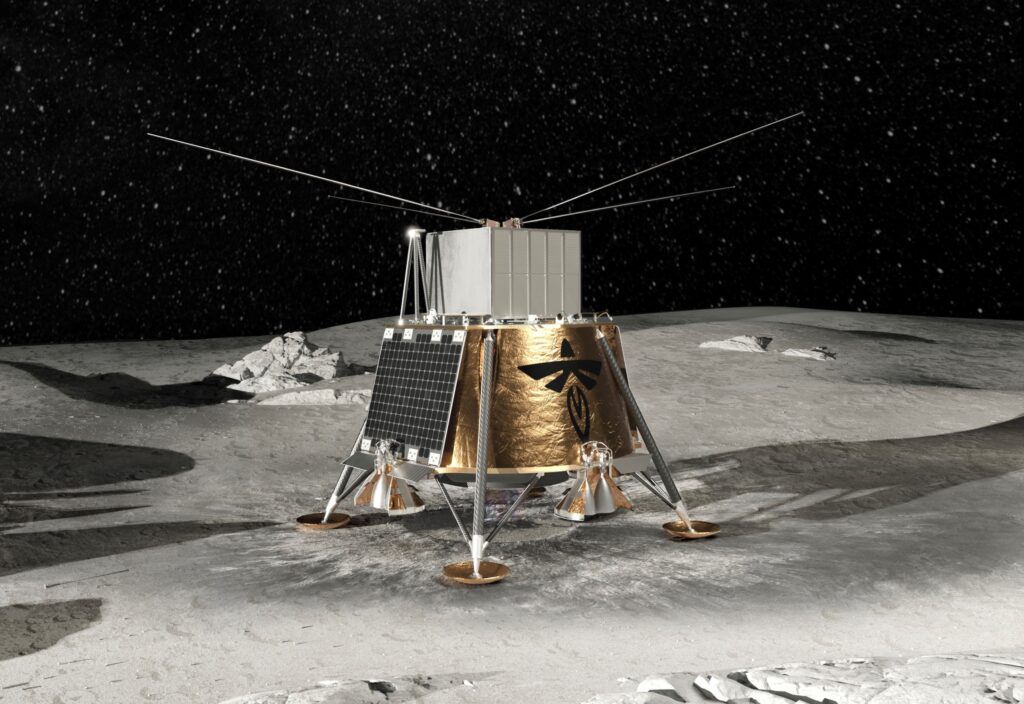 There are unexplored regions of the universe – and there are also unexplored times. In fact, there’s a nearly 400-million-year gap in our universe’s history that we’ve never seen: a time before stars known as the Dark Ages. To investigate that era, researchers want to pick up a particular radio signal that can’t be measured from Earth. The first step to listening for it is a pathfinder project known as the Lunar Surface Electromagnetics Experiment-Night, or LuSEE-Night. The experiment is slated to head to the moon in 2025, where it will test technology in the harsh lunar environment. Lab researchers are building the experiment’s antenna that will try to tune in to ancient radio waves.
There are unexplored regions of the universe – and there are also unexplored times. In fact, there’s a nearly 400-million-year gap in our universe’s history that we’ve never seen: a time before stars known as the Dark Ages. To investigate that era, researchers want to pick up a particular radio signal that can’t be measured from Earth. The first step to listening for it is a pathfinder project known as the Lunar Surface Electromagnetics Experiment-Night, or LuSEE-Night. The experiment is slated to head to the moon in 2025, where it will test technology in the harsh lunar environment. Lab researchers are building the experiment’s antenna that will try to tune in to ancient radio waves.
This research was featured in Popular Science.
Photosynthesis, Key to Life on Earth, Starts with a Single Photon
Using a complex cast of metal-studded pigments, proteins, enzymes, and co-enzymes, photosynthetic organisms can convert the energy in light into the chemical energy for life. And now, thanks to a study published in Nature, we know that this organic chemical reaction is sensitive to the smallest quantity of light possible – a single photon.
The discovery solidifies our current understanding of photosynthesis and will help answer questions about how life works on the smallest of scales, where quantum physics and biology meet.
This research was featured in Scientific American and IFLScience.
Berkeley Lab Scientists Develop a Cool New Method of Refrigeration
Adding salt to a road before a winter storm changes when ice will form. Researchers applied this basic concept to develop a new method of heating and cooling. The technique, named “ionocaloric cooling,” takes advantage of how heat is stored or released when a material changes phase – such as changing from solid ice to liquid water. The ionocaloric cycle causes this change through the flow of ions that come from a salt. Researchers hope that the method could one day provide efficient heating and cooling, which accounts for more than half of the energy used in homes, and help phase out current “vapor compression” systems, which use gases with high global warming potential as refrigerants.
This research was featured in Ars Technica, Physics World, and Chemistry World.
Mountains Vulnerable to Extreme Rain from Climate Change
As rising global temperatures shift snow to rain, mountains across the Northern Hemisphere will be hotspots for extreme rainfall events that could trigger floods, landslides, and soil erosion – potentially impacting a quarter of the world’s population. Scientists already expect climate change to increase the volume of water falling during extreme events, but this study is the first time that researchers have looked at whether that extreme precipitation comes as rain or snow. They found that the fraction of water falling as snow decreased in mountainous regions, falling instead as rain – making mountains particularly susceptible to extreme rain hazards. The North American Pacific mountain ranges, Himalayas, and high-latitude regions are most at risk.
This research was featured in The New York Times, Associated Press, New Scientist, Scientific American, and Inside Climate News.
2023 was a great year for Berkeley Lab’s ongoing research in key areas such as hydrogen and quantum computing, and we secured funding to pursue new research topics that will help the country and world meet emerging challenges in fields such as carbon sequestration and security against biological threats.
How Scientists Are Accelerating Next-Gen Microelectronics
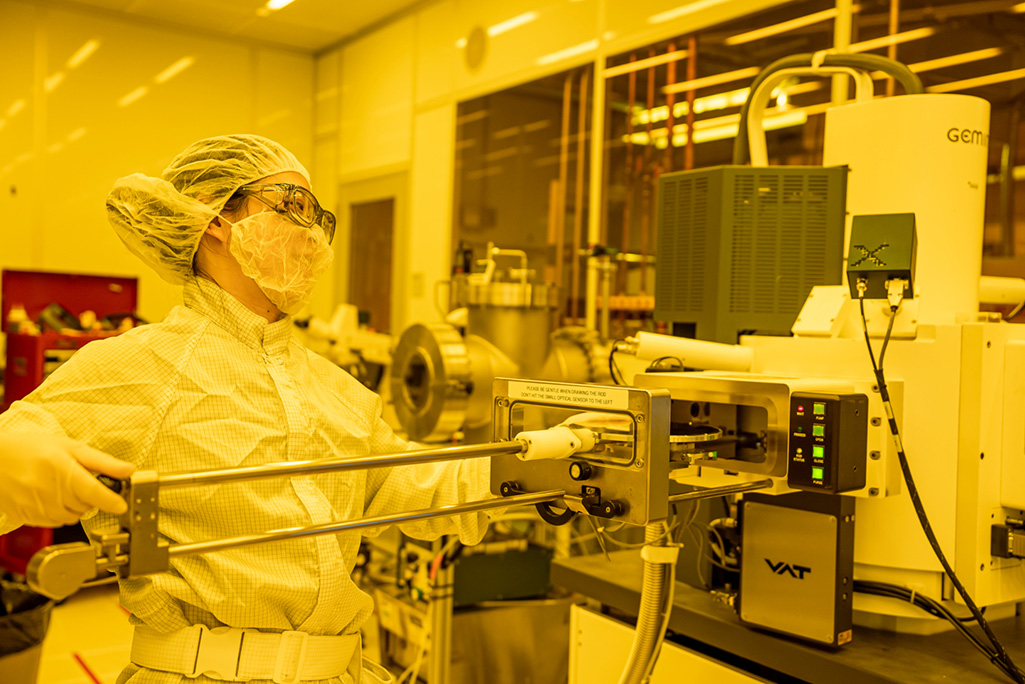
Beihang Yu preparing silicon wafers for inspection at the Molecular Foundry’s nanofabrication facility. Marilyn Sargent/Berkeley Lab
Computer chips – also known as microchips – are tiny silicon components that power everything from smartphones to smart speakers, life-saving medical devices, and electric vehicles. Staying at the forefront of this technology is critical to our economic security and national defense. And now, thanks to Berkeley Lab’s new Center for High Precision Patterning Science – or CHiPPS – faster, more powerful chips of the future could be available in just a few years.
CHiPPS researchers are probing at the nanoscale the mysterious inner workings of extreme ultraviolet (EUV) lithography, a revolutionary technique that enables the world’s leading semiconductor manufacturers to pack more than 100 billion transistors – miniature “switches” which help a computer retain and process data – into a chip the size of a fingernail. Their work could help microchip manufacturers make even smaller, more powerful chips, and help the U.S. design and produce the world’s most advanced chips domestically.
This research was featured in CleanTechnica, Silicon Semiconductor Magazine, and the German electronics magazine Electronik Praxis.
Meet the Autonomous Lab of the Future
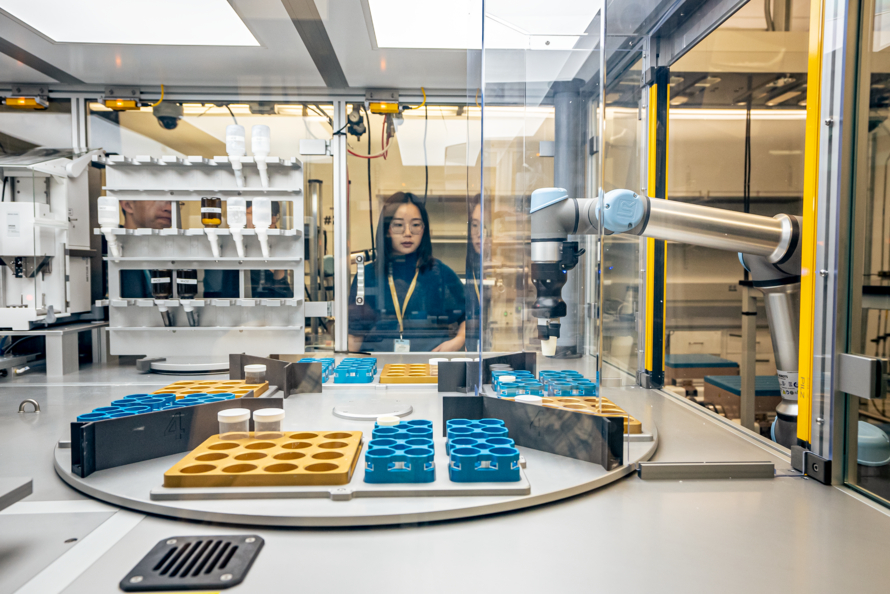
Yan Zeng in the A-Lab on Tuesday, February 14, 2023 at Lawrence Berkeley National Laboratory in Berkeley, Calif. 02/14/23
Scientists have computationally predicted hundreds of thousands of novel materials that could be promising for new technologies – but testing to see whether any of those materials can be made in reality is a slow process. Enter A-Lab, which can process 50 to 100 times as many samples as a human every day and quickly pursue promising finds. The autonomous lab uses robots guided by artificial intelligence to rapidly synthesize new materials with minimal human input. The goal is to accelerate development of useful new materials, with a focus on clean energy technologies such as better batteries. The lab began operations in spring and released first results in November.
This research was featured in Popular Science, Science, and Wired.
Making Renewable Infinitely Recyclable Plastics Using Bacteria
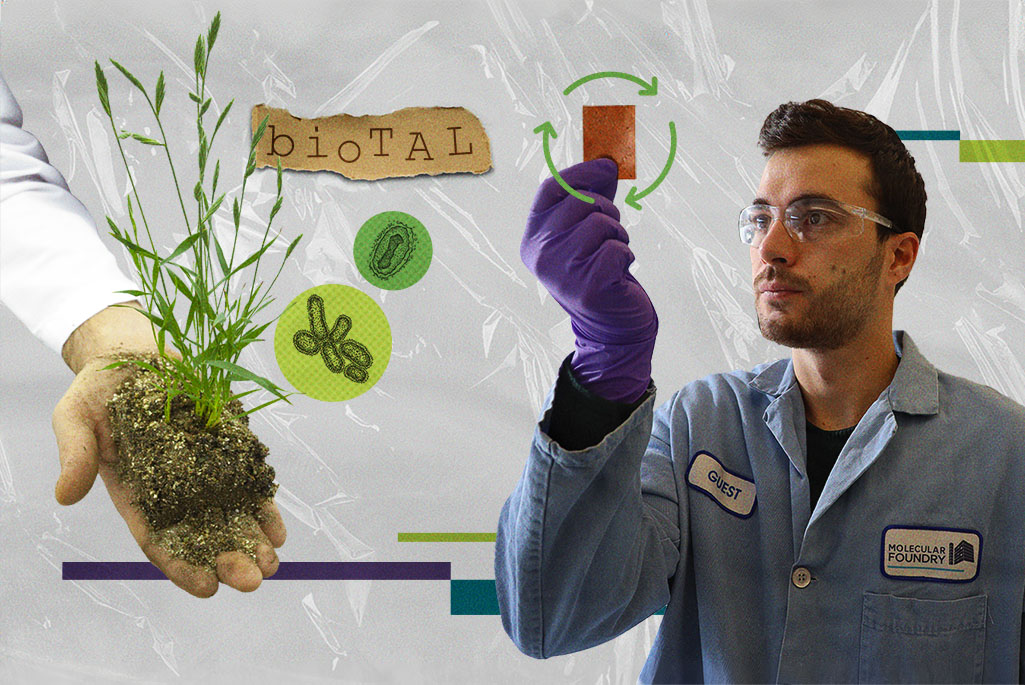 Plastic waste is a problem. Most plastics can’t be recycled, and many use finite, polluting petrochemicals as the basic ingredients. But that’s changing. Researchers successfully engineered microbes to make biological alternatives for the starting ingredients in an infinitely recyclable plastic known as poly(diketoenamine), or PDK. PDKs can be repeatedly broken down into pristine building blocks and formed into new products with no loss in quality. This is the first time that scientists have made a PDK that is predominantly bio-based, and the new approach shows that renewable, recyclable plastics are not only possible, but can also outperform those made from petrochemicals.
Plastic waste is a problem. Most plastics can’t be recycled, and many use finite, polluting petrochemicals as the basic ingredients. But that’s changing. Researchers successfully engineered microbes to make biological alternatives for the starting ingredients in an infinitely recyclable plastic known as poly(diketoenamine), or PDK. PDKs can be repeatedly broken down into pristine building blocks and formed into new products with no loss in quality. This is the first time that scientists have made a PDK that is predominantly bio-based, and the new approach shows that renewable, recyclable plastics are not only possible, but can also outperform those made from petrochemicals.
This research was featured in UPI and Earth.com.
Electric Vehicle Batteries Could Get Big Boost With New Polymer Coating
Scientists have developed a conductive polymer coating – called HOS-PFM – that could enable longer lasting, more powerful lithium-ion batteries for electric vehicles. The new coating material conducts both electrons and ions at the same time. This ensures battery stability and high charge/discharge rates while enhancing battery life. The coating also shows promise as a battery adhesive that could extend the lifetime of a lithium-ion battery from an average of 10 years to about 15 years. HOS-PFM could also allow the use of electrodes containing as much as 80% silicon. Such high silicon content could increase the energy density of lithium-ion batteries by at least 30%. And because silicon is cheaper than graphite, the standard material for electrodes today, cheaper batteries could significantly increase the availability of entry-level electric vehicles.
Underground Water Could be the Solution to Green Heating and Cooling
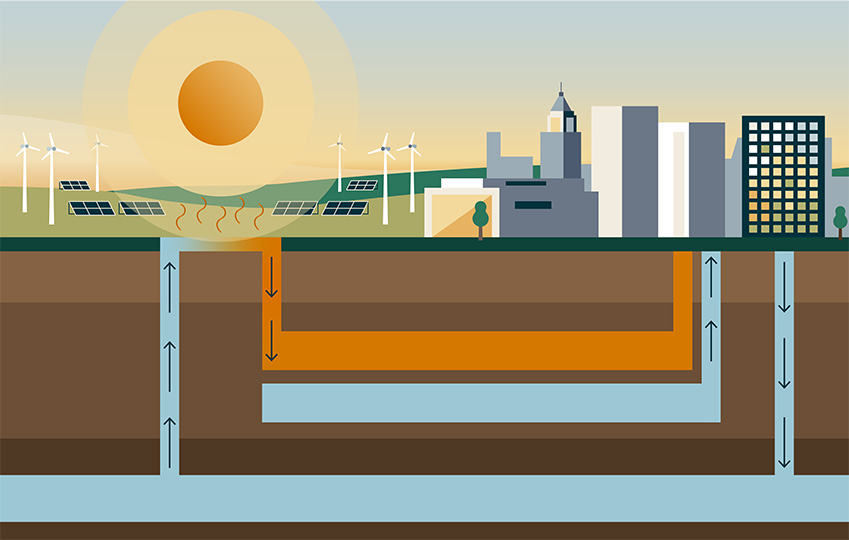
Aquifer thermal energy storage (ATES) uses naturally occurring underground water to store energy that can be used to heat and cool buildings. (Jenny Nuss/Berkeley Lab).
Roughly 12% of the total global energy demand comes from heating and cooling homes and businesses. New research suggests that using underground water to maintain comfortable temperatures could reduce consumption of natural gas and electricity in this sector by 40% in the United States. The approach, called aquifer thermal energy storage (ATES), could also help prevent blackouts caused by high power demand during extreme weather events. ATES is a delightfully simple concept that leverages the heat-absorbing property of water and the natural geological features of the planet. When paired with wind and solar energy, ATES becomes a zero-carbon option for temperature regulation.
This research was featured in Wired and Tech Explorist.
Hit Story from late 2022:
Say Hello to the Toughest Material on Earth
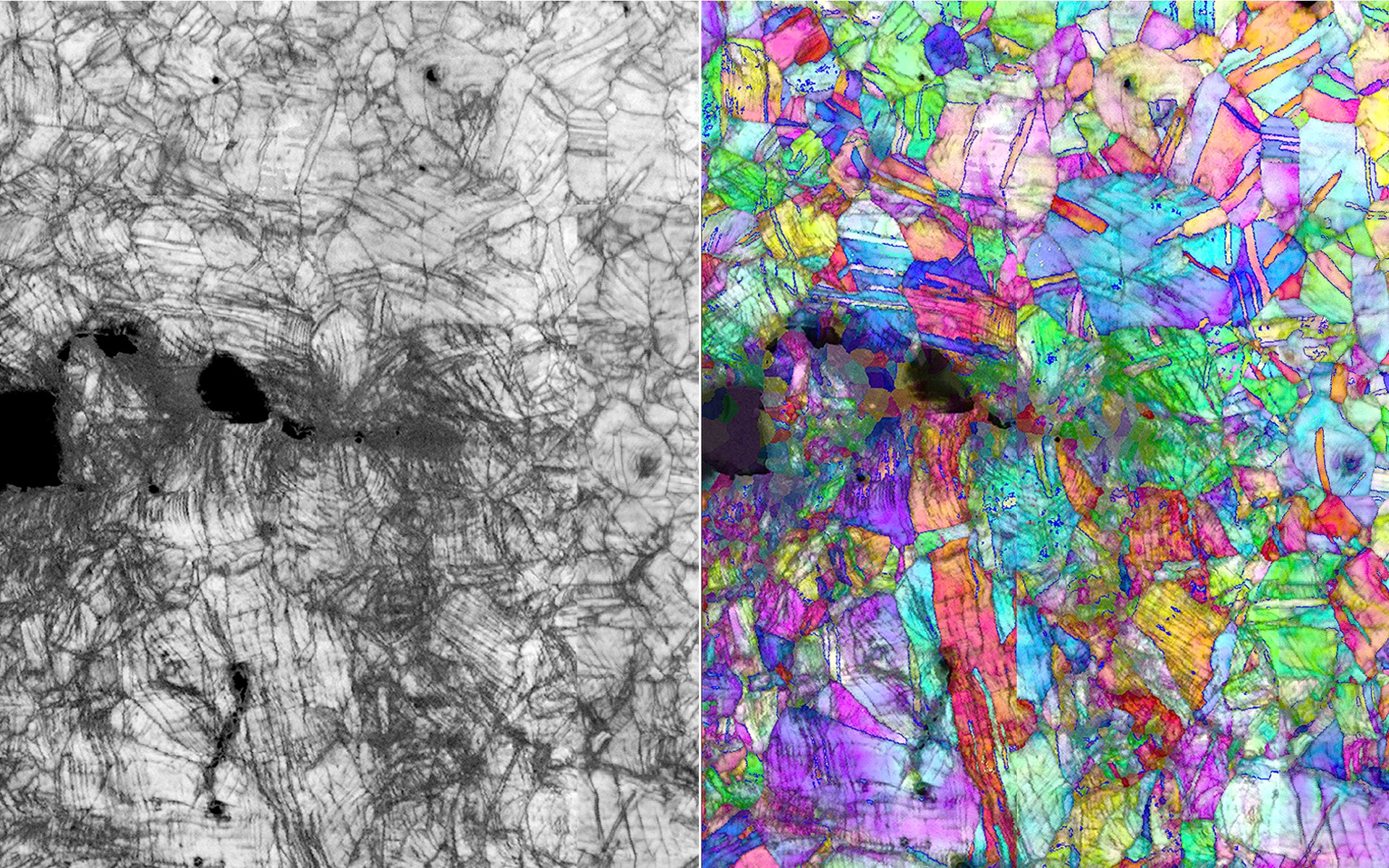
Microscopy-generated images showing the path of a fracture in the CrCoNi alloy at nanometer scale during stress testing at 20 kelvin (-424 F). The fracture is propagating from left to right. Robert Ritchie/Berkeley Lab
Scientists have measured the highest toughness ever recorded, of any material, while investigating a metallic alloy made of chromium, cobalt, and nickel (CrCoNi). Not only is the metal extremely malleable and impressively strong, its strength and malleability improve as it gets colder. This runs counter to most other materials in existence.
“When you design structural materials, you want them to be strong but also ductile and resistant to fracture,” said project co-leader Easo George. “Typically, it’s a compromise between these properties. But this material is both, and instead of becoming brittle at low temperatures, it gets tougher.”
The team’s findings on how these remarkable properties emerge from a seemingly simple metallic alloy may force the materials science community to reconsider long-held notions about how physical characteristics give rise to performance.
This work was featured in Science Alert, Technology Networks, The Hindu, and Interesting Engineering.
Lab Scientists Receive Enrico Fermi Presidential Award and Medal of Technology and Innovation
Retired Faculty Senior Scientist Ashok Gadgil was awarded the National Medal of Technology and Innovation, the nation’s highest honor for technological achievement, by President Biden in October 2023. He was recognized “for providing life-sustaining resources to communities around the world. His innovative, inexpensive technologies help meet profound needs from drinking water to fuel efficient cookstoves. His work is inspired by a belief in the dignity of all people and in our power to solve the great challenges of our time.” Read the full story.
In March, the White House announced Darleane Hoffman and Gabor Somorjai as recipients of the Enrico Fermi Presidential Award, one of the oldest and most prestigious science and technology honors bestowed by the U.S. government. Hoffman is a nuclear chemist known for the study of transuranic elements, quickly decaying elements that are heavier than uranium. Somorjai is a chemist whose research has advanced surface chemistry important for energy and clean water, in addition to a range of other contributions. Read the full story
###
Lawrence Berkeley National Laboratory (Berkeley Lab) is committed to delivering solutions for humankind through research in clean energy, a healthy planet, and discovery science. Founded in 1931 on the belief that the biggest problems are best addressed by teams, Berkeley Lab and its scientists have been recognized with 16 Nobel Prizes. Researchers from around the world rely on the Lab’s world-class scientific facilities for their own pioneering research. Berkeley Lab is a multiprogram national laboratory managed by the University of California for the U.S. Department of Energy’s Office of Science.
DOE’s Office of Science is the single largest supporter of basic research in the physical sciences in the United States, and is working to address some of the most pressing challenges of our time. For more information, please visit energy.gov/science.
